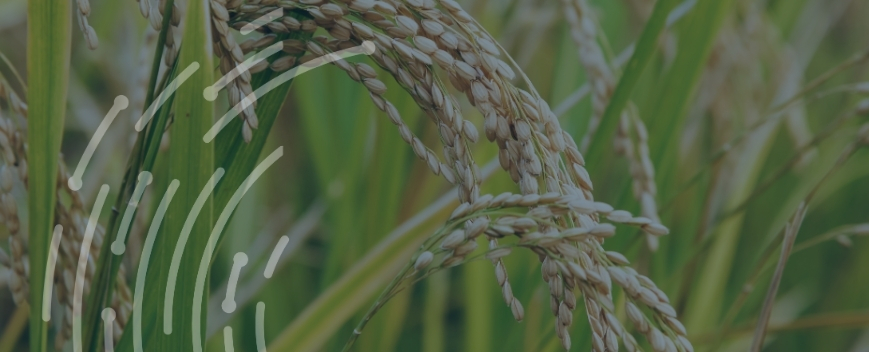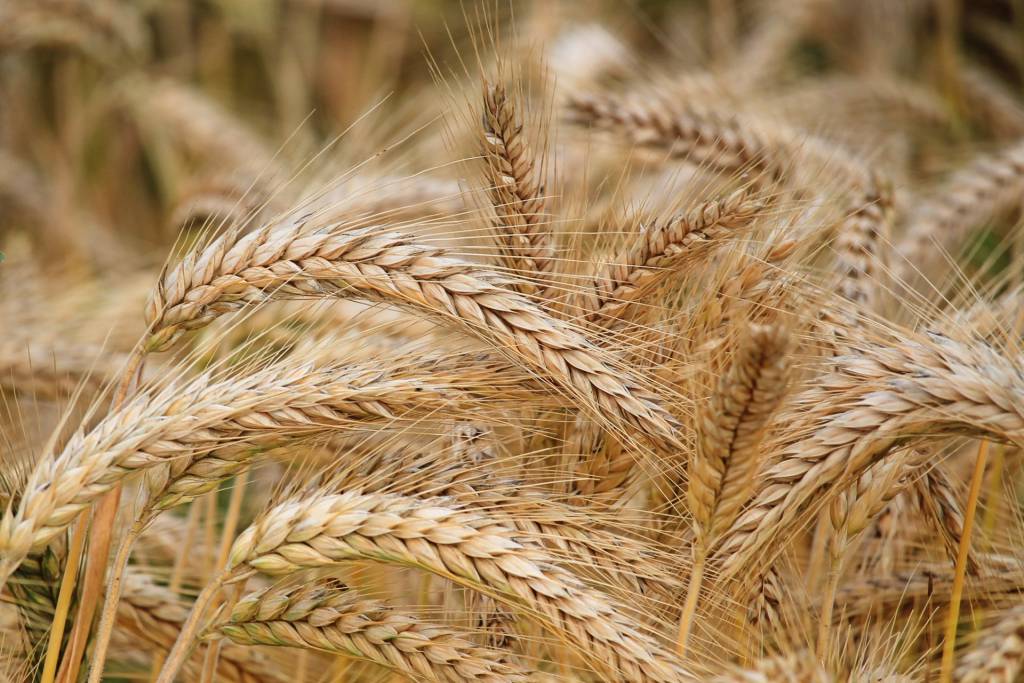All You Need to Know About Wheat

Content
All You Need to Know About Wheat
Wheat is a highly nutritional and widely-cultivated cereal grain. For over 7 centuries, wheat has been raised and harvested in many countries around the world. It’s one of the world’s most important crops and holds the title of the second most-produced grain in the world, beaten only by corn.
In 2022-23, global wheat production reached over 781 million metric tons, securing its place as one of the world’s most consumed grains, second only to rice. Wheat remains a crucial dietary staple for numerous regions, providing 20% of the global population’s daily protein intake. Its ability to grow in various soils and climates significantly contributes to its widespread consumption.
The largest wheat exporters include countries such as Russia, the United States, Canada, France, and Ukraine. On the other hand, the biggest importers of wheat are typically countries like Egypt, Indonesia, Turkey, and the Philippines.
To support traders interested in this vital agricultural commodity, TFG has updated its comprehensive guide on understanding wheat and its role in the global market, including information on the major importers and exporters.

The Different Types of Wheat
There are many different varieties of wheat, each of which has different protein contents and kernel colours.
There are two primary categories: winter wheat and summer wheat, which are classified based on their growing season.
They’re then sub-categorised based on hardness, colour, and shape. You can find information on these subcategories in the table below.
| Type of Wheat | Properties |
| Soft red winter wheat | This type of wheat has baking properties which make it suitable as an ingredient in baked goods like cakes, pastries and cookies. |
| Hard red winter wheat | This type of wheat is grown in low temperatures and snow-covered regions. It has high protein content and is used for products like general purpose flour, flatbreads and cereals. It’s also the most important type of wheat produced in the United States. |
| Hard red spring wheat | This type of wheat is produced in hot, dry climates. It’s gluten characteristics make it a good choice for use in food products like bagels, croissants and pizza crusts. |
| Soft white wheat | Sweeter and softer than other types of wheat. It’s low in protein and gluten which makes it great for more exquisite pastries and cakes, as well as Asian noodles. |
| Hard white wheat | This type of wheat has slightly less protein and is less bitter than hard red wheat. It’s used in softer loaves such as pan loaves. |
| Durum wheat | This type of wheat has more protein than any other type and is used to make pasta. |
The Many Uses of Wheat
Unsurprisingly, the main demand for wheat comes from human consumption. In fact, over two-thirds of wheat produced globally is used as food. It contains many vitamins and minerals which make it a staple food product. It’s used in premium bread making, general purpose bread making, biscuit and cake making, and as animal feed.
Although foodstuffs represent the main use of wheat, it also has several alternative uses. The gluten and starch present in wheat make it elastic and able to bind water. This makes wheat useful for products like:
- Animal feed:
- A portion of wheat production is allocated for animal feed, particularly for poultry and livestock.
- Wheat middlings, a byproduct of flour milling, are commonly used in animal feed due to their high protein content.
- Biofuel:
- Wheat can be used to produce ethanol, a biofuel that can replace or supplement gasoline.
- In 2020, around 5% of global wheat production was dedicated to ethanol production
- Bioplastics:
- Wheat straw and chaff can be used as a raw material to create biodegradable plastics.
- These bioplastics offer an environmentally friendly alternative to traditional petroleum-based plastics.
- Paper production:
- Wheat straw can be used in paper production as an alternative to wood pulp.
- This helps reduce deforestation and contributes to more sustainable paper production.
- Construction materials:
- Wheat straw can be processed into building materials like straw bale and particleboard.
- These materials offer insulation, soundproofing, and environmental benefits compared to conventional construction materials.
- Industrial absorbents:
- Wheat straw and chaff can be used as absorbent materials for oil spills and other industrial applications.
- They provide a natural and cost-effective alternative to synthetic absorbents.
Wheat Market Overview
The wheat market is volatile and subject to weather patterns which influence yields. For this reason, price changes are difficult to predict.
On the supply side, countries in the Black Sea region are continuing to increase their production of wheat. The region, which made up less than 10% of the global grains market in the early 2000s, now makes up 25%.
The demand for biofuel is up and expected to continue to rise due to China’s clean energy targets that are being rolled out over the coming years. This could lead to more acreage being given to corn and less to wheat.
If wheat becomes the grain of choice in growing economies, demand may continue to grow. However, wheat is facing competition from other feed grains such as corn and it’s speculated that this may slow growth in the years to come.
For a more in-depth overview of wheat prices in 2023/24, see the USDA publication on Grain: World Markets and Trade here.
What Drives the Price Of Wheat?
The 5 main trade factors that drive the price of wheat are listed in the table below:
| Driving Factor | Why? |
| Emerging Markets | Population increases in regions like the Middle East, Africa, and Southeast Asia may cause an increased demand for staple foods like wheat which would cause prices to rise. |
| Weather | As with all agricultural commodities, supplies are determined by crop yields which are heavily influenced by the weather. Larger yields can cause prices to drop and smaller yields can cause prices to spike. |
| Ethanol Subsidies | US government subsidies aimed at boosting ethanol production have encouraged farmers to increase their corn acreage. Should these subsidies end, farmers may turn to wheat instead, which may, in turn, increase yields and cause prices to fall. |
| The Value of the US Dollar | The price of wheat is quoted in dollars. If the dollar is strong, the price of wheat (in dollars) falls. The reverse is also true. |
| Governmental Actions | Actions taken by governments, such as the enactment of import duties and tax subsidies, often influence the supply of and demand for wheat which then drives the price. |
How Is Wheat Traded and Financed?
Wheat Trading
There are multiple ways to invest in wheat. Traders can invest through wheat shares, wheat CFDs, wheat ETFs, wheat futures, and wheat options futures.
Wheat Finance
Traders often use receivables finance and secured financing to grow their trade lines.
Receivables financing refers to an arrangement in which a company receives financing against receivables like unpaid invoices and other outstanding payments.
Video: CME Group – Chicago Wheat Futures
If you’ve got five minutes to spare and you’re interested in finding out more about the production, use, and transportation of wheat, this video by the CME group does a great job of explaining it.
Wheat Suppliers and Producers
Wheat is grown all over the world, in many different countries, as different types of wheat are able to thrive in a diverse range of climates and soil conditions.
In the US, wheat is grown in 42 states, but the US is only the fourth largest producer of wheat. Their annual production of the crop is around 49.8 million metric tons. China produces more than double this amount, with an annual production of over 134.3 million metric tons.
The top 5 wheat-producing countries are:
Wheat Contract Specifications
Wheat is typically priced in U.S. dollars (USD) per bushel or per metric ton, depending on the market. A bushel is a volume-based measurement used in the United States, equivalent to approximately 60 pounds or 27.216 kilograms of wheat. In the international market, wheat is commonly priced per metric ton (1,000 kilograms or 2,204.62 pounds).
The Harmonized System (HS) code for wheat is 1001. The HS code is an internationally standardised system of names and numbers to classify traded products. Wheat has several subcategories under the HS code 1001, such as:
- 1001.11: Durum wheat
- 1001.19: Other durum wheat
- 1001.91: Wheat and meslin seed for sowing
- 1001.99: Other wheat and meslin
Wheat is typically transported in bulk, either by truck, rail, or ship, depending on the distance and destination. For shorter distances, trucks are commonly used, while rail is preferred for longer distances within a country or across borders. For international trade, especially when covering long distances, ships are the primary mode of transportation, with wheat being loaded into large bulk carriers at ports.
Wheat futures contracts are traded on various commodity exchanges, such as the Chicago Board of Trade (CBOT) in the United States and the European Euronext exchange. These contracts help set the global benchmark prices for wheat and allow producers, traders, and consumers to manage price risk associated with the commodity.
- All about Grains
- Podcasts
- Videos
- Resources
- Conferences















